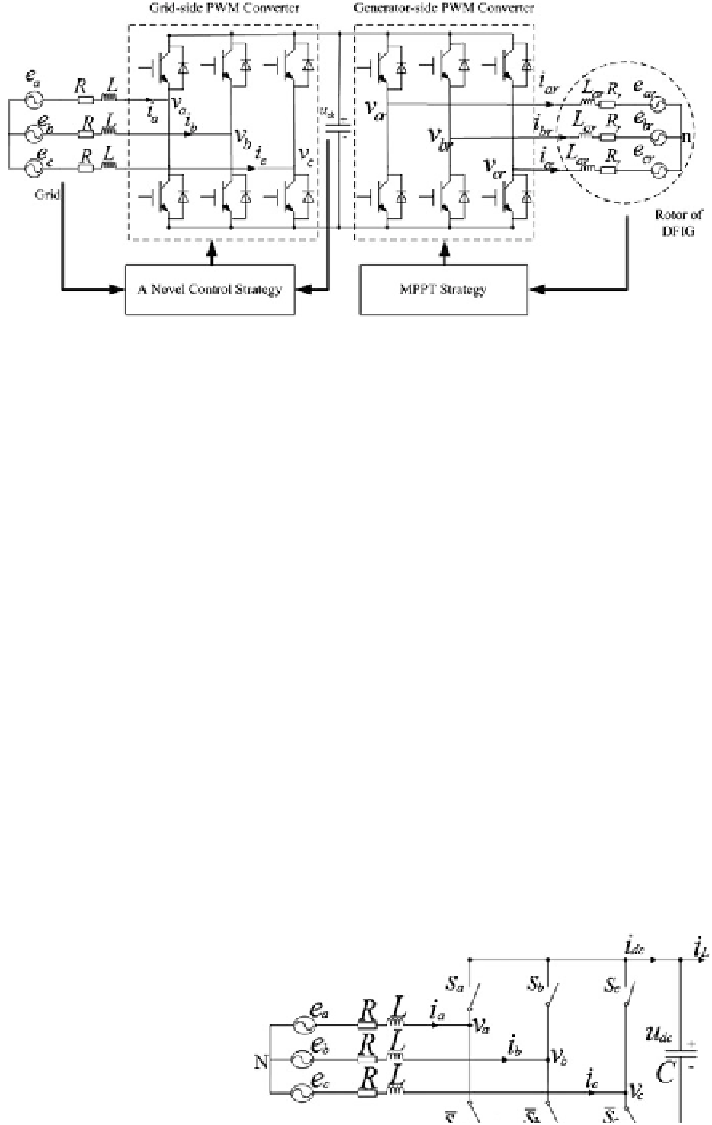Environmental Engineering Reference
In-Depth Information
Fig. 3.3
Back-to-back PWM converter topology
which may be an induction generator, a permanent magnet synchronous generator,
or a DFIG. The intermediate DC circuit makes it possible for the two sides to be
controlled independently.
Back-to-back PWM converters have many significant advantages, such as unity
power factor, bidirectional power flow, and controllable DC-link voltage [
17
],
which makes it widely used in many industrial applications. To achieve these
performances simultaneously, the design of controllers is important. At present,
there are many researches on the design of the controllers. With the development
of the design method, it can be roughly classified into two categories: linear and
nonlinear control. In [
18
] and [
19
], proportional-integral (PI) controllers have been
proposed, which are for achieving unity power factor, meanwhile a cascaded PI
controller is used to regulate the DC-link voltage indirectly by controlling the
input currents. However, the design of these controllers depends on the accurate
parameters of the system to provide a linear model, so they are sensitive to
parameter disturbances. Since the grid-side PWM converter is a multiple variables,
strong coupling nonlinear system, the nonlinear control strategy without ignoring
nonlinearities of the system can achieve better both static and dynamic perfor-
mances. Nonlinear control methods, such as fuzzy control methods, are applied to
improve the system performance [
20
,
21
], which are lack of theoretical analysis
and cannot ensure stability and damping characteristics of the closed-loop system.
Fig. 3.4 The Grid-side
PWM Converter Model

